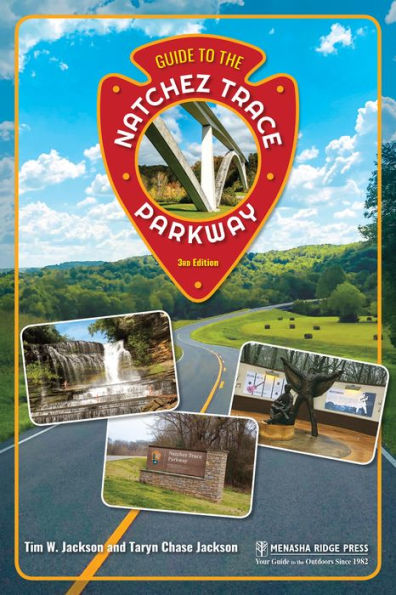Read an Excerpt
OVERVIEW
That Smoky Mountains ranger couldn’t have been more wrong. Most federal parks or landmarks are devoted to a limited number of themes. The graceful Natchez Trace Parkway “ribbon of time,” however, has many threads. It can transport you back 9,000 years to the time of Paleo-Indian hunters, drop you into a Civil War battle, urge you to contemplate “the Nile of the Western Hemisphere,” encourage you to empathize with foot-weary 19th-century travelers yearning for home, and teach you about contemporary farming practices. The historical riches, cultural avenues, and exploratory possibilities of the Natchez Trace Parkway are numerous.
This park’s natural beauty doesn’t come from dramatic mountainous overlooks but instead from mostly flat terrain rendered in a balanced, subtle palette. In the spring, roadside stretches of clover, wildflowers, grassy fields, and dogwood blossoms wave. Summer is often crowned with pure blue skies and a healthy green, divided only by the yellow-striped roadway. In fall the soft gray Spanish moss gives way to the russet of maples and oaks. In winter the sturdy dark green of mature cedars takes on promising significance. The road alternately holds you in the close embrace of its shady refuge or shoots you into light-filled pastures and croplands. This is a hypnotic environment, a soothing melody of forest and field.
The most famous period for this path was from around 1790 to 1820, when it served as one of the primary passageways through the southwest territory of what was then relatively new country. Farmers, boatmen, diplomats, ladies, preachers, bandits, soldiers, murderers, and slaves used it to travel between Nashville, Tennessee, and Natchez, Mississippi. By 1800 it was also a United States postal route traversed on horseback by courageous men who risked their lives at breakneck speeds. But the Trace has been around for much, much longer than a mere two centuries.
If you’re in a hurry, then perhaps you should choose another route: driving at 50 mph is a legal requirement on most stretches, but this slower pace will also help you relax and notice the Parkway’s many sights. For those of us enjoying the ride, few things are more irritating than a vehicle riding too close behind, just waiting for an opportunity to zoom past. Also, bikers are often plentiful during warm weather, so it’s wise to pay attention and give cyclists the proper amount of space. Using your imagination, you can replicate some of the same experiences that others before you have had here for millennia. After all, many of the vistas have not changed substantially. Ultimately, this is the affirming power of the Trace: along this distance, powerfully strong human and natural links still exist across time.



